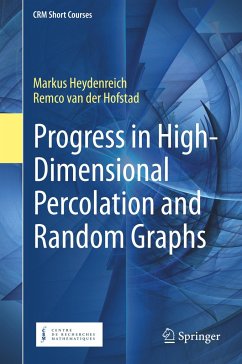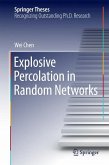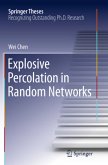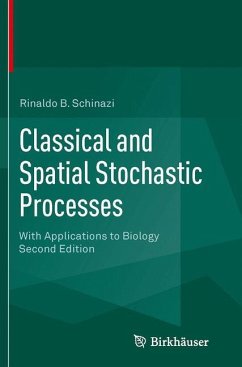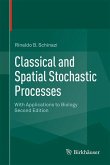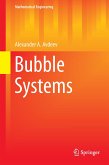This text presents an engaging exposition of the active field of high-dimensional percolation that will likely provide an impetus for future work. With over 90 exercises designed to enhance the reader's understanding of the material, as well as many open problems, the book is aimed at graduate students and researchers who wish to enter the world of this rich topic. The text may also be useful in advanced courses and seminars, as well as for reference and individual study.
Part I, consisting of 3 chapters, presents a general introduction to percolation, stating the main results, defining the central objects, and proving its main properties. No prior knowledge of percolation is assumed. Part II, consisting of Chapters 4-9, discusses mean-field critical behavior by describing the two main techniques used, namely, differential inequalities and the lace expansion. In Parts I and II, all results are proved, making this the first self-contained text discussing high-dime
nsional percolation. Part III, consisting of Chapters 10-13, describes recent progress in high-dimensional percolation. Partial proofs and substantial overviews of how the proofs are obtained are given. In many of these results, the lace expansion and differential inequalities or their discrete analogues are central. Part IV, consisting of Chapters 14-16, features related models and further open problems, with a focus on the big picture.
Part I, consisting of 3 chapters, presents a general introduction to percolation, stating the main results, defining the central objects, and proving its main properties. No prior knowledge of percolation is assumed. Part II, consisting of Chapters 4-9, discusses mean-field critical behavior by describing the two main techniques used, namely, differential inequalities and the lace expansion. In Parts I and II, all results are proved, making this the first self-contained text discussing high-dime
nsional percolation. Part III, consisting of Chapters 10-13, describes recent progress in high-dimensional percolation. Partial proofs and substantial overviews of how the proofs are obtained are given. In many of these results, the lace expansion and differential inequalities or their discrete analogues are central. Part IV, consisting of Chapters 14-16, features related models and further open problems, with a focus on the big picture.
"Text appeals to a wide audience, be it postgraduate students, researchers aspiring to work in the field, or experts in percolation. It is written in a very accessible style, comprising many excellent exercises, and may be used as a basis for postgraduate courses on various aspects of percolation. ... it is a must read for anybody seriously interested in percolation." (Christian Mönch, Mathematical Reviews, July, 2019)

